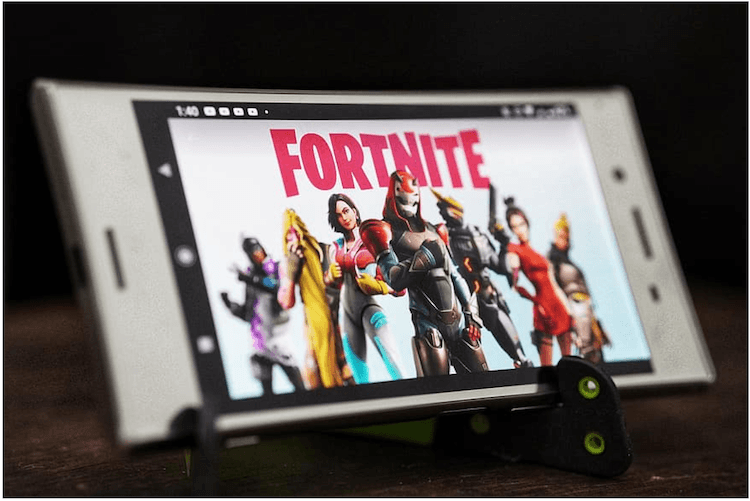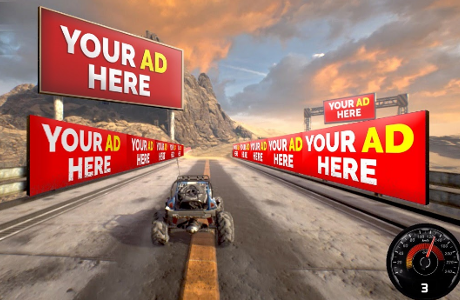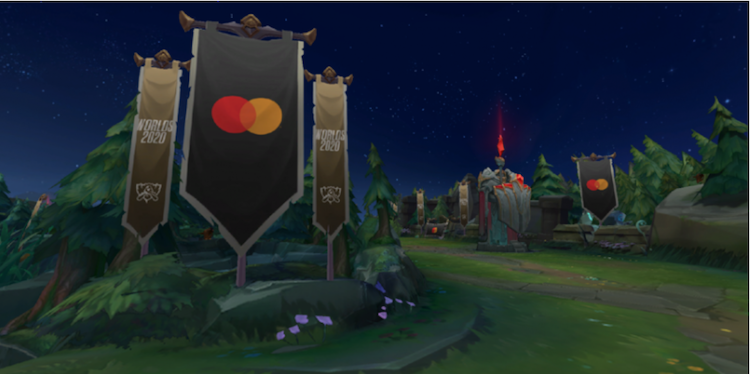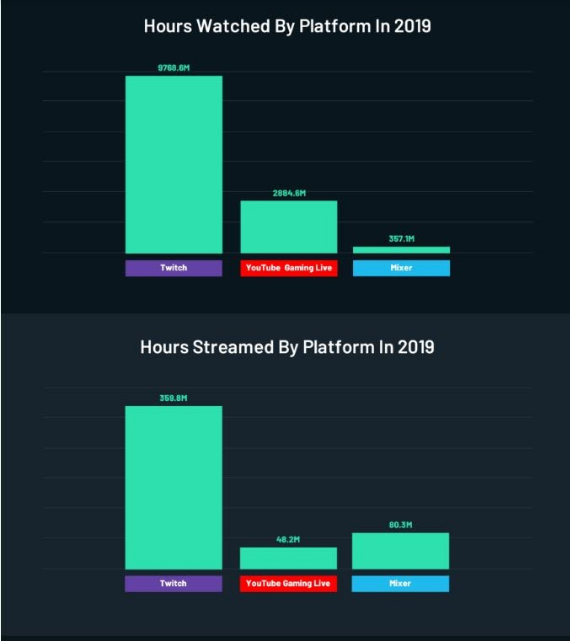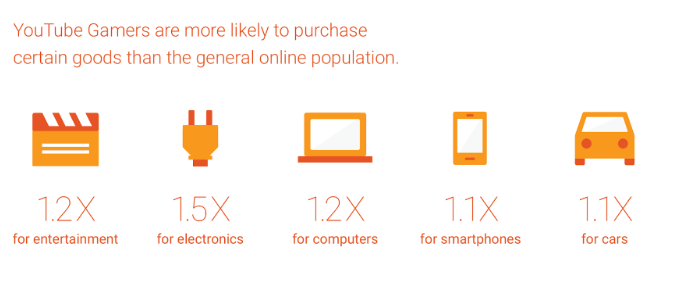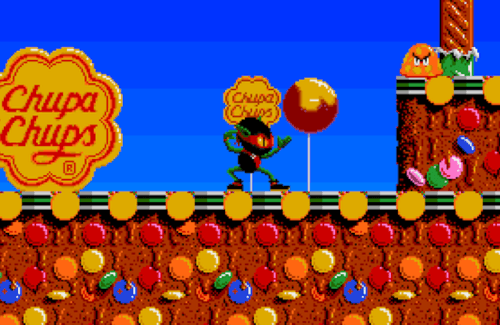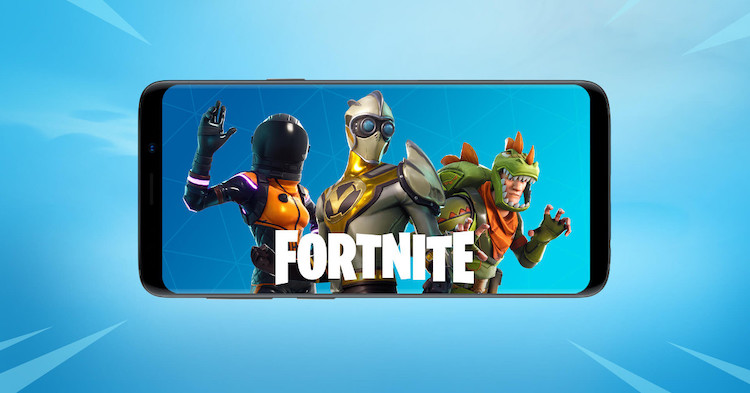
The rise of the smartphone and the subsequent shift to apps over the mobile web completely changed the way advertisers connected with consumers. Adtech companies introduced new formats that complemented user behaviors, such as in-app ads. At the same time, gaming and tech companies also made a move to incorporate ads into gaming experiences on mobile devices as well as PCs and consoles, calling the format in-game ads. So, if an ad appears in a mobile game, is it an in-app ad or in-game, and does it matter? In this article, Anzu’s VP Sales, Alex Yerukhimovich, discusses the difference between formats and how brands can use each one to their benefit.
Marketers have always looked to capitalize on the newest forms of communication and entertainment to reach audiences. In its heyday, placing ads in print media was the gold standard. Once television sets became standard in homes, brands that could afford to produce commercials or secure product placement deals within movies outpaced smaller companies that didn’t have the same budgets.
Then, the internet matured, and marketers started placing ads on websites. It seemed as though the golden age of digital marketing had arrived. Tech companies rushed to find ways to deliver ads faster and with a higher degree of relevance. Programmatic technology, coupled with advanced targeting capabilities, was a game-changer as marketers could maximize connections with consumers who were willing to trade personal information for better experiences.
But, consumers can be fickle. They quickly became exhausted as they were bombarded by ads, some of which were completely irrelevant to them and others that caused technical glitches like slow loading times. Others were alarmed by third-party cookies that enabled ads that followed people across their browsing experience. Both situations led to the mass interest in and installation of ad blockers. In line with people’s distaste for third-party cookies and the growing concern over data privacy, Google announced earlier this year, that the third-party cookie will crumble, so to say, in about two years. Yet, it’s not all doom and gloom in the world of advertising. It’s quite the opposite, and we can thank technology for that too.
We have become reliant on smart devices. The average person spends three hours and 15 mins on their phone while top users log more than four and a half hours per day. In the first half of 2018, nearly 77% of the total gross app revenue came from consumer spending on gaming apps, which is no surprise given that over 65% of US smartphone users have multiple gaming apps on their devices. Brands, well aware of these statistics, try to reach consumers through their devices with in-app ads, including in games.
Fortnite is one of the most popular video games of all time.
Source: Pikist
The ever-growing popularity of gaming extends beyond smart devices to consoles. As of May 2020, more than 157 million PlayStation 2 consoles have been sold in addition to 154 million Nintendo DS consoles, 118 million Game Boys, and 85 million Xbox 360s. As they’ve done in the past, adtech companies have developed technology to incorporate advertising into console games, now referred to as in-game ads.
So, if gaming content can have in-app ads and in-game ads, what’s the difference and why should you choose one over the other? The confusion is real, but we’re here to help sort it out because the two formats are different in many ways, and marketers should understand how to use each to get the best bang from their advertising buck.
In-app Ads: How Smartphones Created a New Ad Channel
Many of us can’t remember life before our internet-connected smart devices, but they only came into existence a little over a decade ago. In 2007, the first iPhone was introduced, and although other smartphones like the Palm and Blackberry were already on the market, they didn’t have the same impact as Apple’s device. Suddenly, everyone had the internet in their hands wherever they went. Yet, the mobile browsing experience left much to be desired, and advertisers struggled to create ad formats that worked well on the mobile web.
Things changed dramatically in 2008 when Apple introduced the App Store with 500 native apps. Smartphone users left the poor mobile web experience behind and started downloading apps for sites such as Facebook and The New York Times. This spurred the rapid development of apps of all kinds, from practical utility apps to addictive games like Candy Crush. By 2015, consumers were spending 88% of their online time inside native apps, essentially forgoing the mobile web almost entirely.
Ad technology was fast-tracked to meet users where they were – inside apps or what we now call in-app advertising. In the beginning, the ads were clunky and limited to banner ads, but they evolved rather quickly and now include several different formats such as interstitial ads, overlay ads, and native and video ads. Just as they are on the web, in-app ads are served using programmatic technology, and advertisers can use demographic targeting parameters to reach their intended audience.
Players are offered in-game bonuses for watching ads.
Source:: Mobile Ecosystem Forum
In-app ads appear at particular times within the app experience, such as when opening an app or after a few actions. In games, ads can appear after a level is completed or when the player runs out of lives. The player has to pause their gamine experience and watch up to a 30-second ad before moving on.
App users and casual gamers like those who play Candy Crush or Sudoku have come to tolerate the interruption because either the app is free to use or they earn a reward for watching it. Advertisers like these ads because they drive actions. Typically, the ads include a call to action (CTA), usually asking the user to download a new app or take some other action. This type of ad, even though it appears within a game, is still considered an in-app advertisement.
In-game Ads: From Hard-coded Content to Dynamic Creatives
The first in-game ad appeared in Pirate Adventure in 1978 and was much like the product placements you often see in TV and movies. The 1990s saw a mix of ad content in gaming ranging from Chupa Chups partnership with Zool: Ninja of the Nth Dimension, which saw the brand and candy peppered throughout the game, to FIFA’s static ads that appeared on billboards in the stadium to Chex Mix’s own advergame released in 1996. However, product placement proved difficult because once games were released, there were no opportunities to change the hard-coded ads.
Chupa Chups uses product placement in a video game to increase brand awareness.
Source: Whatculture.com
In 2002, IGA Worldwide and Massive Inc began focusing on in-game ads, and while they managed to create demand, both companies ultimately were liquidated after a few years. However, as more advanced consoles were released and gaming technology improved, ads started to permeate games as pop-ups or static banners. Game developers and marketers were looking for better ways to incorporate ads, but the industry was not mature enough. To better replicate a real-world experience, developers added fake ads to games.
Fast forward a decade, and digital marketing was completely different in terms of delivering ads and tracking and measuring ad performance. At the same time, gaming was picking up in popularity, moving from a subculture to a mainstream form of entertainment. Companies began developing technology that would place ads into games in non-disruptive ways to preserve the uninterrupted gaming experience players wanted.
Blended In-game Ads
Now, in-game advertising has evolved into something that rivals any other channel or platform. When talking about in-game ads today, we are referring to ad content that seamlessly blends into the gaming environment. Blended in-game ads can appear in games played on mobile devices, PCs, and consoles. They are delivered programmatically and dynamically updated, offering unprecedented creative opportunities.
Blended in-game ads offer brands a lot of creative freedom and can appear on just about any in-game object. In sports games like Madden NFL, you might see them on stadium signage, scoreboards, player jerseys, and brand-sponsored replays while popular shooter-style games show ads on billboards, storefronts, and more. Essentially, in-game ads appear in the same places you would see advertisements in the real world, and that is very much on purpose as it enhances the gaming environment.
An example of how brands can seamlessly place blended in-game ads into video games.
Source: Anzu.io
An important differentiator of blended in-game ads is that they aren’t clickable or meant to be engaged with because they are blended into the game’s environment. They exist to increase brand awareness and brand affinity. Gamers are hyper-focused while playing, taking in every detail on the screen in front of them, including the ads.
In line with the brand awareness metric, adtech companies have pushed hard to develop technology that measures ad viewability during fast-paced gameplay. Marketers can easily know if an ad was seen head-on or from the side, completely in view or partially obstructed by a game object. This level of measurement, combined with extensive targeting capabilities, ad fraud protection, and brand safety measurements, makes in-game ads more attractive for brands than ever before.
Brands Running In-game Ads
Many notable brands are already using in-game advertising as part of their multi-channel campaigns, and their key to success is to maintain authenticity. Knowing the popularity of Riot Games’ League of Legends Summer Split tournament, Mastercard placed its branding on digital signage, a move that would feel natural if the competition were taking place live. Since everyone uses credit cards, it was an excellent opportunity to put their brand in front of thousands of potential customers.
Mastercard’s blended in-game ad in League of Legends
Source: Riot Games
Telecommunication giants Vodafone and Samsung both relied on in-game ads to promote new devices and offers. Their ad content was seen on in-game billboards in racing games and stadium signage in sports-oriented games, again replicating how ads appear in real-life situations. Another great example is Gatorade, which piggybacked on its foothold in the sports industry and added its logo to drink coolers in NBA 2K19.
The Real Reach of In-Game Ads
Those and other brands are aware that the impact of their ads goes beyond the individual player who sees them. The rise of esports, competitive video gameplay, has significantly contributed to the phenomenon of millions of players and fans watching others stream their gaming sessions online. All of those viewers are also exposed to in-game ads as they watch players do their thing.
Twitch, which has a 73% market share of live-streaming platforms, accrued 9.3 billion hours watched in 2019. More than 990 million of those hours were viewers consuming gaming content. YouTube Live Gaming also puts up some impressive numbers, registering just over 900 million hours watched, and JuegaGerman ranks as the most subscribed to gaming channel with 35.1 million subscribers. Mixer, the third-largest platform, accumulated 357 million hours watched.
The number of hours gaming content was watched and streamed on top platforms.
Source: Streamlabs
Who Makes Up the Gaming Audience in 2020?
As of 2020, there are 2.7 billion gamers worldwide. To put that into perspective, consider that Facebook has 2.6 million monthly active users, while Netflix, the largest streaming service, has just under 193 million subscribers. What’s particularly interesting and usually surprising for advertisers to discover beyond the size of the market is gamers’ demographics.
Gamers are no longer reclusive teenage boys playing games in their parents’ basements. Seventy-two percent of gamers are over the age of 18, with the average player being a 34-year-old parent and homeowner. Women make up 45% of the gaming community, and that number is continuing to grow. In an era where cord-cutting is rampant among millennials and Gen Z’ers, most of whom consume their media content through streaming services such as Netflix or social media platforms including YouTube. Reaching this coveted age group has become increasingly difficult, but gaming provides marketers with a valuable lifeline.
Gamers also have tremendous spending power, and they are interested in much more than gaming-related purchases. Gamers that play more than 10 hours per week have double the disposable income when compared to their non-gaming counterparts. According to a Google report, gamers are ‘uber-consumers,’ meaning they buy certain products more than the general population and are more likely to write product reviews, make recommendations, and influence others’ decision-making process.
The purchasing power of gamers compared to the general population.
Source: Think with Google
In-App or In-game: Which is Right for Your Brand
Both in-app and in-game ads should be included in a comprehensive, multi-touch media strategy. Each ad type serves a different purpose, so you don’t need to choose one over the other. A better approach is to use in-game ads as part of your brand awareness campaigns and in-app ads to trigger actions. As you would do with all of your campaigns, test the medium, creative, message, and audience, using data to fine-tune your ads and maximize your ROI.



